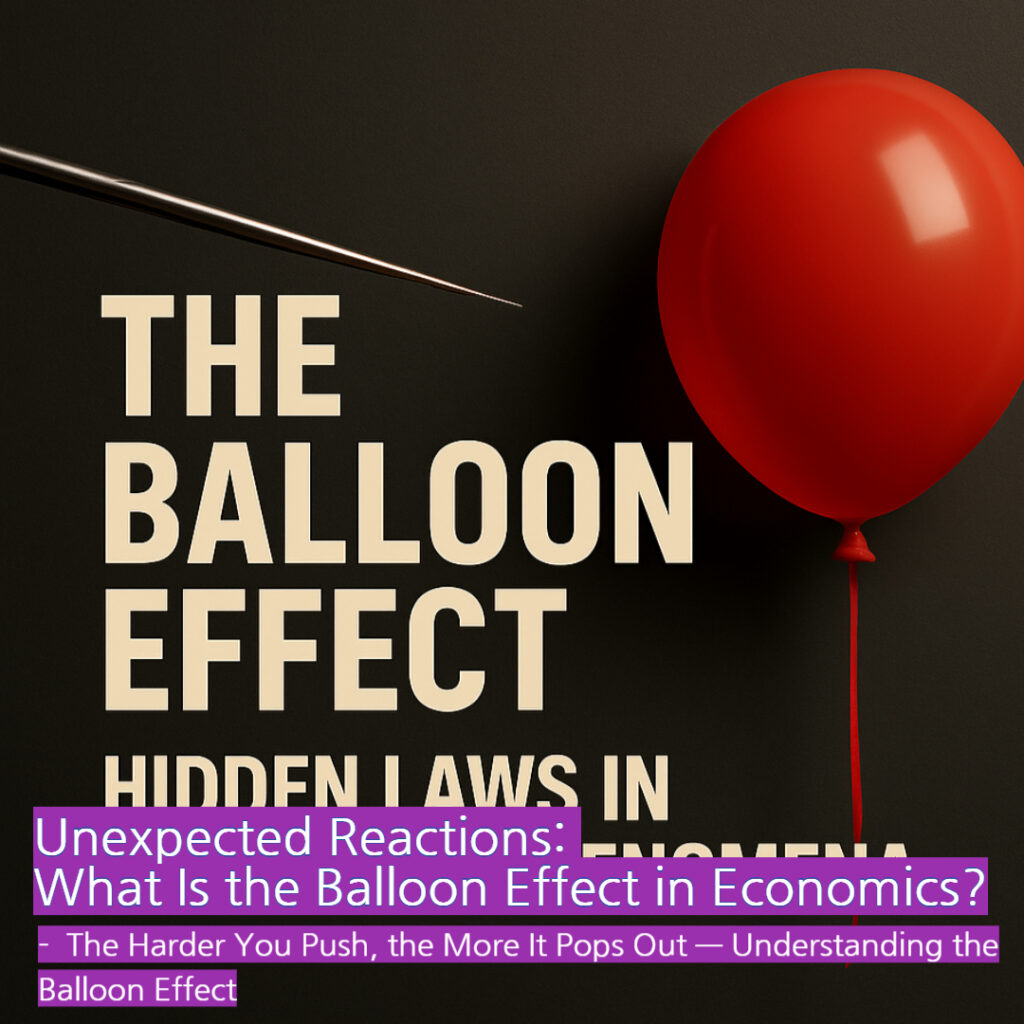
Unexpected Reactions: What Is the Balloon Effect in Economics?
The Harder You Push, the More It Pops Out — Understanding the Balloon Effect (6 min)
What Is the Balloon Effect?
The “balloon effect” refers to a situation where suppressing or controlling one area causes unintended consequences to pop up elsewhere — just like when you press one side of a balloon and the other side bulges out. Originally used in the context of international drug control, this concept is now widely applied to real estate, taxation, education, and financial markets.
Why Does It Pop Up Like a Balloon?
The balloon effect isn’t just a simple side reaction. It occurs due to imbalances in supply and demand, market evasion strategies, and behavioral shifts in response to regulation.
- Real estate regulation: When the government imposes strong housing regulations in central Seoul (e.g., Gangnam), demand shifts to surrounding areas like Incheon or Pyeongtaek, leading to soaring property prices there instead.
- Education policy: When standardized test subjects are de-emphasized to curb private tutoring, students and parents redirect their efforts to extracurriculars or alternative qualifications — another form of the balloon effect.
Why the Balloon Effect Is a Problem
| Aspect | Advantages | Disadvantages |
|---|---|---|
| Short-term impact | Temporary suppression of the target issue | Doesn’t solve the root problem |
| Policy response | Quick regulatory action possible | Leads to market distortion or loophole-seeking behavior |
| Social outcome | Visible enforcement results | Can create new inequalities and unintended side effects |
How Can We Address It?
Preventing the balloon effect requires a system-wide approach. Policymakers must anticipate not just the direct impact of a regulation, but its ripple effects across the broader system.
- Design policies with the full market ecosystem in mind
- Implement follow-up mechanisms to monitor side effects
- Use data-driven tools like simulations and AI modeling to predict outcomes
Real-World Examples of the Balloon Effect
1. Drug enforcement in South America: As Colombia cracked down on drug production, operations shifted to Peru and Bolivia. The total supply stayed largely intact. This was documented by the U.S. DEA in the 1980s and ’90s. (DEA official site)
2. South Korea’s housing policies: According to the Ministry of Land, Infrastructure and Transport, heavy regulation in Gangnam during 2020 led to a spike in housing transactions and prices in outlying areas like Dongtan and Gimpo later that year. (Korean Real Estate Transaction System)
In Conclusion: The Balloon Effect Isn’t Just Reaction — It’s Redirection
Often described as the “shadow of policy,” the balloon effect reveals how tightly controlled systems can shift problems rather than solve them. Recognizing this helps citizens and decision-makers alike understand the full picture behind economic phenomena.
Summary
This article explains the balloon effect — what it is, why it happens, and real examples from housing and drug enforcement. Knowing this helps us better grasp the hidden side of policies and market reactions.
최근 게시물
- [Chapter 3] Surprising Global Archive Trends: Why Google and Netflix Are Getting Involved
- [Part 2] 5 Leading Korean Digital Archive Platforms
- The Era of Documentation: Digital Archive Insights [Chapter 1] What is a Digital Archive?
- Unexpected Reactions: What Is the Balloon Effect in Economics?
- Practical Earnings Comparison: Coupang Partners vs Google AdSense